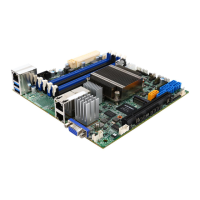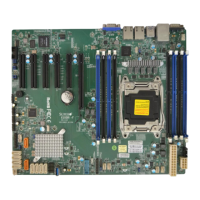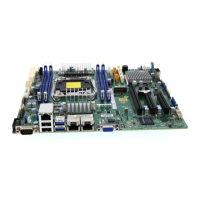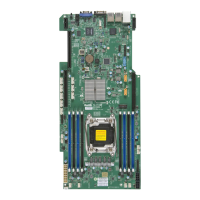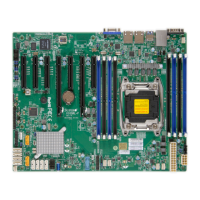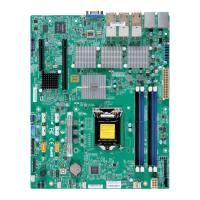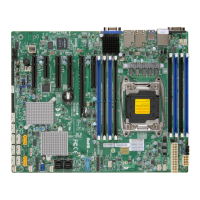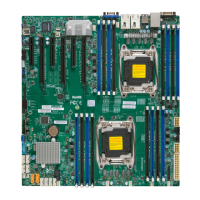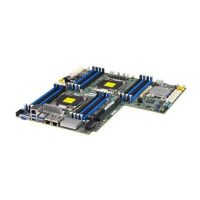Do you have a question about the Supermicro X10SDV-TLN4F and is the answer not in the manual?
Provides an overview of the motherboard's capabilities and target audience.
Outlines the structure and content of the user manual.
Explains symbols and conventions used throughout the manual.
Lists contact information for Supermicro support in different regions.
Details the initial system setup, included items, and where to find resources.
Provides a visual diagram of the motherboard's components and connectors.
A concise visual guide to the motherboard's connectors and indicators.
Lists and describes the function of all jumpers and connectors on the motherboard.
Explains the meaning and status of various onboard LEDs.
Comprehensive list of CPU, memory, network, and I/O specifications.
Describes the Intel Xeon D-1500 SoC processor features and architecture.
Details features like AC power loss recovery and PC health monitoring.
Explains the role of ACPI in power management and system configuration.
Recommends appropriate power supplies and discusses power input options.
Crucial safety warnings and precautions for handling the motherboard and system.
Procedures to prevent damage from electrostatic discharge during handling.
Step-by-step guide for securely mounting the motherboard in the chassis.
Information on compatible memory modules and population guidelines.
Details on rear I/O panel ports including LAN, USB, and VGA.
Pin definitions for power connectors (ATX, DC, HDD) and fan headers.
Explains how to configure motherboard functions using jumpers.
General steps to diagnose and resolve system power, video, and memory issues.
Guidance on preparing for and contacting technical support.
Answers common questions about BIOS updates and memory support.
Instructions for safe removal, disposal, and installation of the CMOS battery.
Process for obtaining warranty service and returning products.
Overview of the AMI BIOS setup utility and its navigation methods.
Configuration options for system date, time, and basic hardware information.
Extensive settings for boot, power, CPU, chipset, and other system parameters.
Controls boot screen display options and bootup behavior.
Manages power button behavior, AC power loss recovery, and watchdog functions.
Settings for CPU features, Hyper-Threading, cores, and performance tuning.
Configuration options for the motherboard's chipset and associated devices.
Settings for Intel I/O Acceleration Technology to reduce CPU overhead.
Enables Intel Virtualization Technology for direct I/O access.
Options for setting memory frequency and enabling RAS features.
Manages SMBIOS event logging and error reporting.
Configuration options for the Intelligent Platform Management Interface.
Settings for system security, including passwords and secure boot.
Configures boot mode, device priorities, and deletion of boot options.
Options to save, discard, or restore BIOS settings and exit the utility.
Lists beep codes indicating POST errors and their meanings.
Guide to downloading and installing system drivers and utilities.
Instructions for installing the SuperDoctor5 hardware monitoring software.
Explains the Unified Extensible Firmware Interface and its role.
Describes the structure of the BIOS flash chip and the recovery process.
Step-by-step guide to recovering the BIOS using a USB flash drive.
Introduces the Dual Boot Block feature for BIOS crisis recovery.
Procedure to use a specific jumper for system recovery from boot block corruption.
| Form Factor | Mini-ITX |
|---|---|
| Socket | FCBGA 1667 |
| Memory Slots | 4 |
| Max Memory | 128 GB |
| CPU | Intel Xeon D-1541 |
| Memory Type | DDR4 |
| Storage Interface | 6x SATA3 |
| Expansion Slots | 1x PCI-E 3.0 x16 |
| Video Outputs | 1x VGA |
| Power Connector | 24-pin ATX |
| Operating System Support | Linux |
